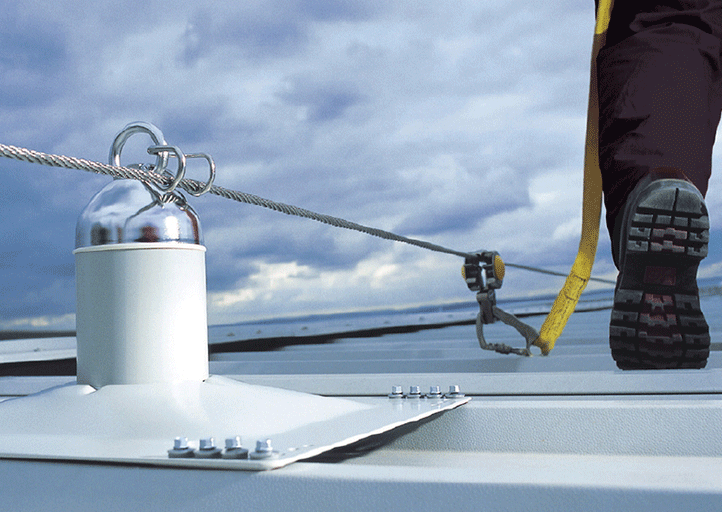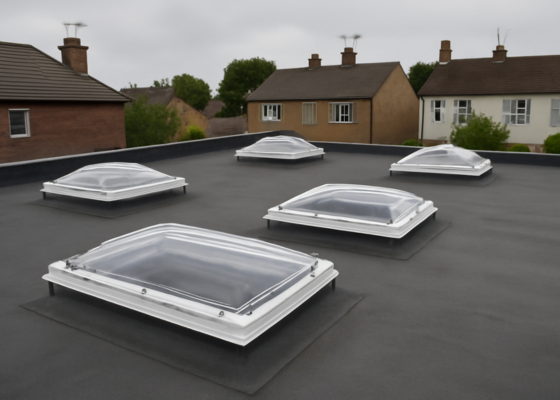When it comes to rooftop safety, many people assume that installing edge protection is enough. It’s a logical first step, especially as falls from height remain one of the leading causes of workplace fatalities. But in reality, there are often many other hidden risks on a roof that aren’t immediately obvious until something goes wrong. That’s why professional rooftop surveys are crucial.
By conducting a detailed roof survey, we can identify all potential hazards and recommend the most suitable safety solution for your specific needs and budget.
Here are some of the key risks we assess, along with the reasons why identifying them is vital.
Unprotected roof edges and openings
The obvious danger on a roof is the edge itself. But many roofs have skylights, rooflights or service hatches that can pose just as much risk.
These often don’t look like fall hazards, but without proper protection, they are. For example, rooflights that are flush with the surface can be difficult to see. It’s easy for workers carrying tools or equipment across a roof not to spot the fragile surface.
Solutions include:
- A guardrail system around the roof perimeters protects individuals or teams working on the roof or maintaining equipment. A benefit of edge protection like this is that specialist training isn’t needed. If the system is freestanding, it doesn’t penetrate the roof membrane, which eliminates the possibility of roof damage or leaks.
- Skylight covers protect people working near fragile skylights and rooflights. The protection can be designed to fit virtually any skylight layout while still allowing natural light to enter the building.
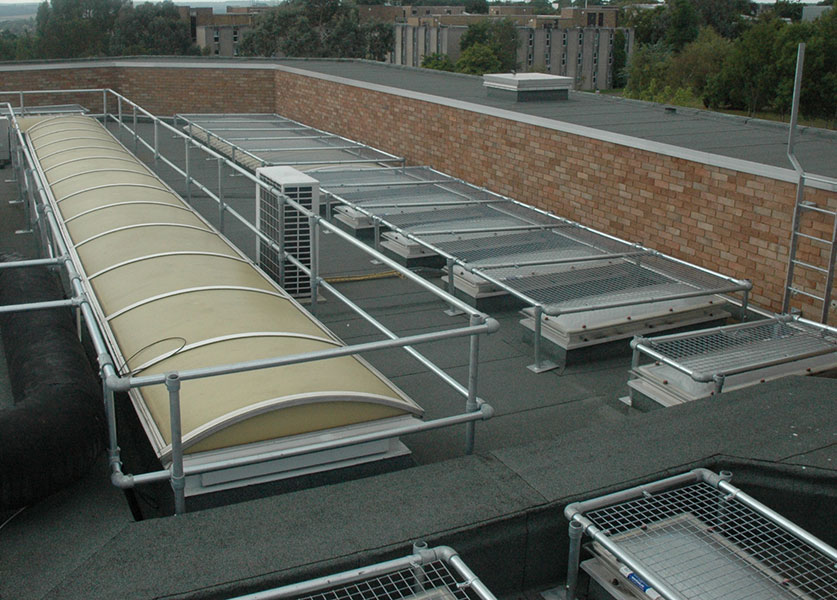
Access points
How workers get onto and off the roof is critical. Access points like ladders, doors, or hatches need to be safe and secure, especially where there’s a change in level or where access is near a fall edge or fragile material. Poor access creates immediate danger and often leads to improvised solutions that increase risk. This includes inadequate access and insufficient lighting, which compromise safe navigation.
Solutions include:
- Fixed vertical ladders with additional safety measures like self-closing gates, fall arrest systems, rest platforms or guardrails so workers can safely access the roof from the ladder.
- Guardrails with gates protect maintenance personnel who access or exit a roof via a hatch.
- Access platforms are ideal for providing safe access between different roof levels. Platforms can be designed to meet specific roof needs and include slip-resistant treads for enhanced safety underfoot.
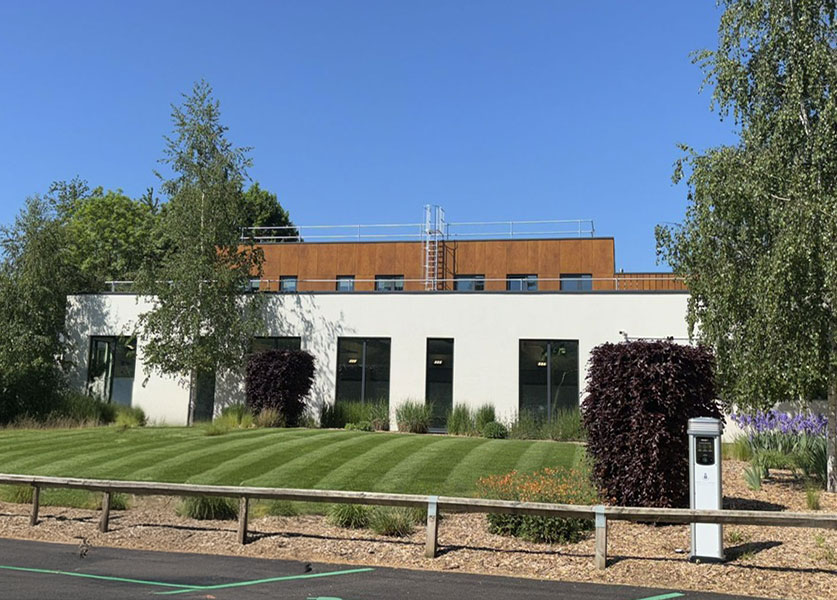
Slippery surfaces
Even flat roofs can be high risk environments in poor weather. Algae growth, standing water, frost and ice, degraded materials, or smooth metal or membrane surfaces can make flat surfaces extremely slippery, turning routine maintenance into high-risk tasks.
Solutions include:
- Anti-slip rooftop walkways provide a safe route across a roof. Guardrails and/or toeboards can give additional safety.
- Routing cleaning and maintenance schedules. This might seem obvious, but you’d be surprised how many roofs we’ve inspected where water is pooling because drains are blocked or the surface is slippery with moss.
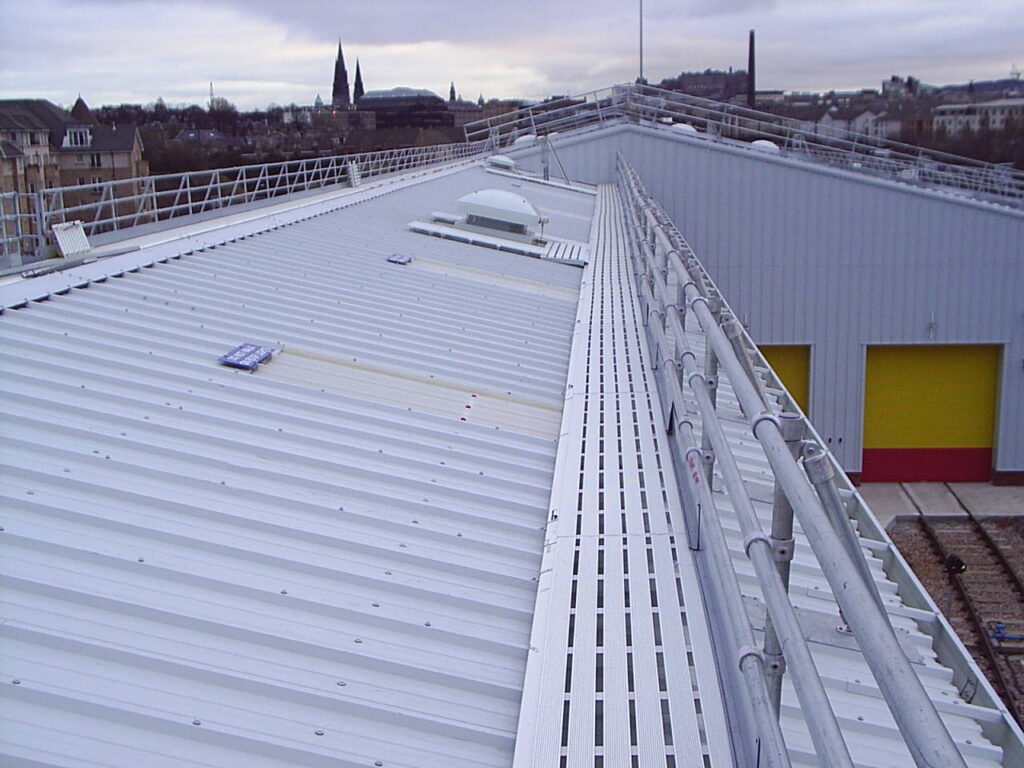
Obstacles
Today’s rooftops can be very congested. HVAC units, ductwork, piping, cable trays, and other services create hazards and restrict movement. They can force workers to take risky shortcuts or work in awkward positions.
Solutions include:
- Step over units to safely cross over pipework or cables. These platforms can be designed for specific hazards, varying in height, size, and configuration.
- Designated walkways with clear demarcation will prevent workers from taking unsafe routes around a roof.
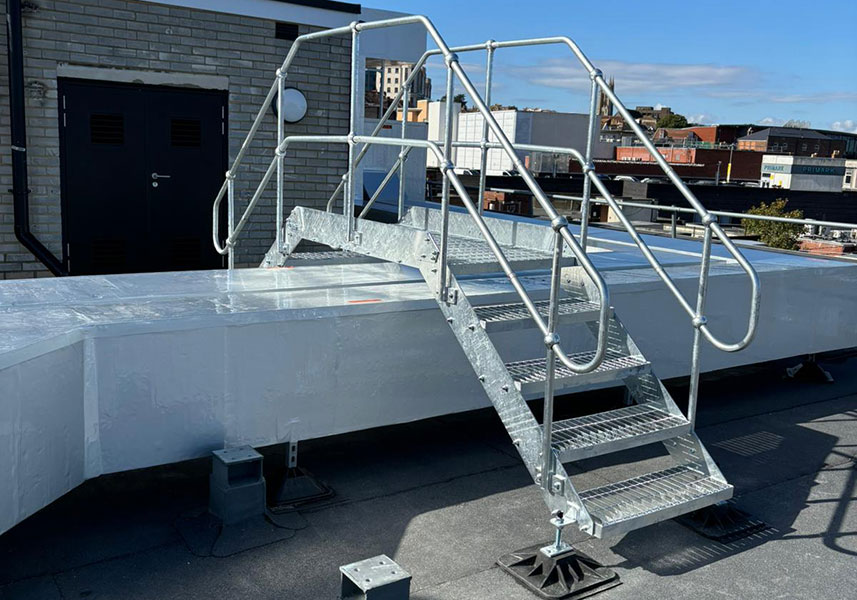
A proactive approach to roof safety
Every roof is different, and hazards aren’t always where you’d expect them. A full rooftop survey by one of our qualified height safety specialists means you’ll get a clear understanding of what’s really needed to keep your team and maintenance engineers safe.
We don’t just install fall protection systems. We identify your rooftop safety needs and provide practical, cost-effective solutions tailored to your specific situation and budget.
If you’re unsure what risks might be present on your rooftop, or you haven’t had a survey in a while, now is the time to act.

